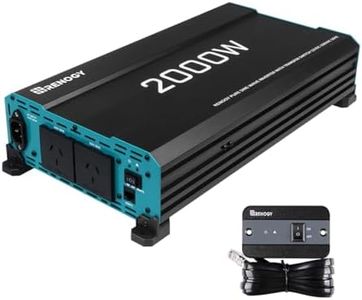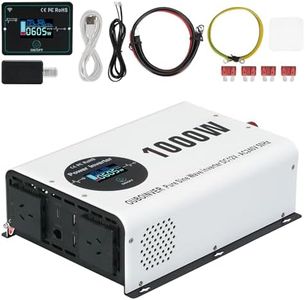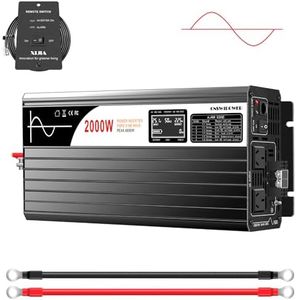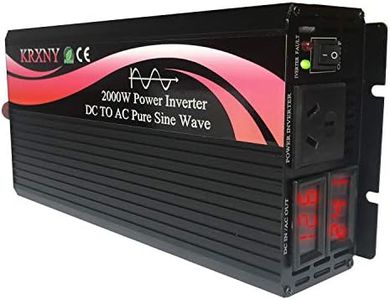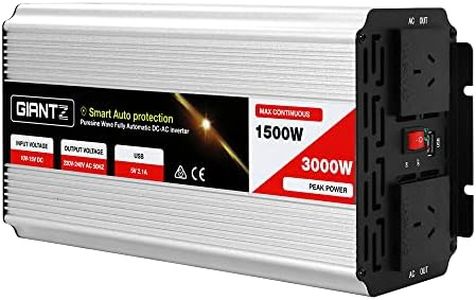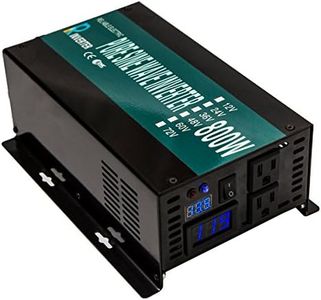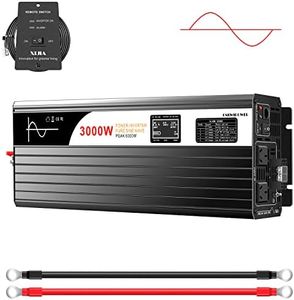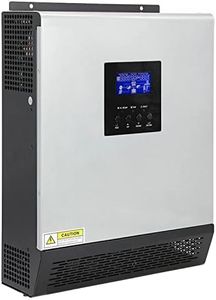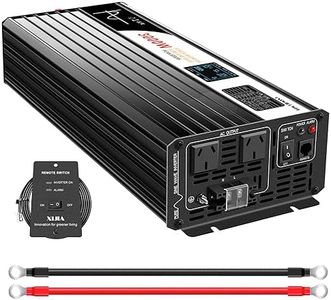We Use CookiesWe use cookies to enhance the security, performance,
functionality and for analytical and promotional activities. By continuing to browse this site you
are agreeing to our privacy policy
10 Best Solar Inverters
From leading brands and best sellers available on the web.Buying Guide for the Best Solar Inverters
Choosing a solar inverter is an important step in setting up a solar energy system, as the inverter is responsible for converting the electricity generated by your solar panels (DC power) into electricity your home or business can use (AC power). It's essential to consider how much solar power you’ll need now and in the future, where you’re installing the system, and any special needs your site might have. By understanding the key specifications, you can ensure your system will be efficient, safe, and meet your energy requirements comfortably.Inverter TypeThere are a few main types of inverters: string inverters, microinverters, and hybrid inverters. A string inverter connects a whole row (or 'string') of solar panels, which is efficient and straightforward for systems with panels that get even sunlight. Microinverters attach to each panel individually, performing better when panels get different amounts of sunlight (like on a roof with shade). Hybrid inverters can work with additional energy storage, like batteries, which is important if you want to store solar energy for use at night. Your choice depends on your installation site: if your solar array is unshaded and simple, a string inverter is suitable; if you have complex or shaded roofs, or plan to add batteries later, you might consider micro or hybrid options.
Power Output (Capacity)Power output is how much electricity the inverter can process, measured in kilowatts (kW). Common residential inverters range from about 1 kW to 10 kW, while commercial setups go much higher. The right capacity should match or slightly exceed the total wattage your solar panels can generate, and fit your household consumption. If you choose a capacity too low, you’ll waste some of the solar power; too high, and the system might not operate at optimal efficiency. You should look at your energy needs and the size of your planned panel array to pick an inverter with matching or slightly higher power output.
EfficiencyInverter efficiency tells you how much of the DC electricity from your panels is actually turned into usable AC power. Higher efficiency means less energy is lost in the conversion process. Most good-quality inverters have efficiencies between 95-99%. For most homes, an inverter with efficiency over 97% is considered very good. If maximizing your solar investment is important to you, aiming for a high-efficiency inverter will make the most of your generated power over time.
Number of MPPTs (Maximum Power Point Trackers)MPPTs are features in an inverter that optimize the performance of your solar panels as sunlight conditions change. More MPPTs allow the inverter to manage different strings of panels separately, for instance, if they’re facing different directions or get shaded at different times. For a simple system with all panels facing the same way and unshaded, one MPPT is usually enough. If your array is more complex—with panels on multiple roof angles—look for more MPPTs to maximize your energy output.
Monitoring and ConnectivityMost modern inverters offer performance monitoring, often accessible via an app or web portal. This lets you keep track of how much energy your system is producing, so you can spot issues quickly. Some inverters only show performance on a basic display, while others offer wireless or wired connectivity for real-time remote management. If you value easily checking on your power production, choose an inverter with comprehensive monitoring features.
Grid Compatibility and Safety FeaturesYour inverter must be compatible with your local electrical grid and meet safety requirements, such as automatic shutdown during a power outage to protect utility workers (anti-islanding protection). Also, inverters may have various certifications required for connection to the grid, which vary by region. Always confirm that your inverter matches the voltage and phase requirements of your local supply, and check for necessary safety features to ensure compliance and the safe operation of your solar system.

